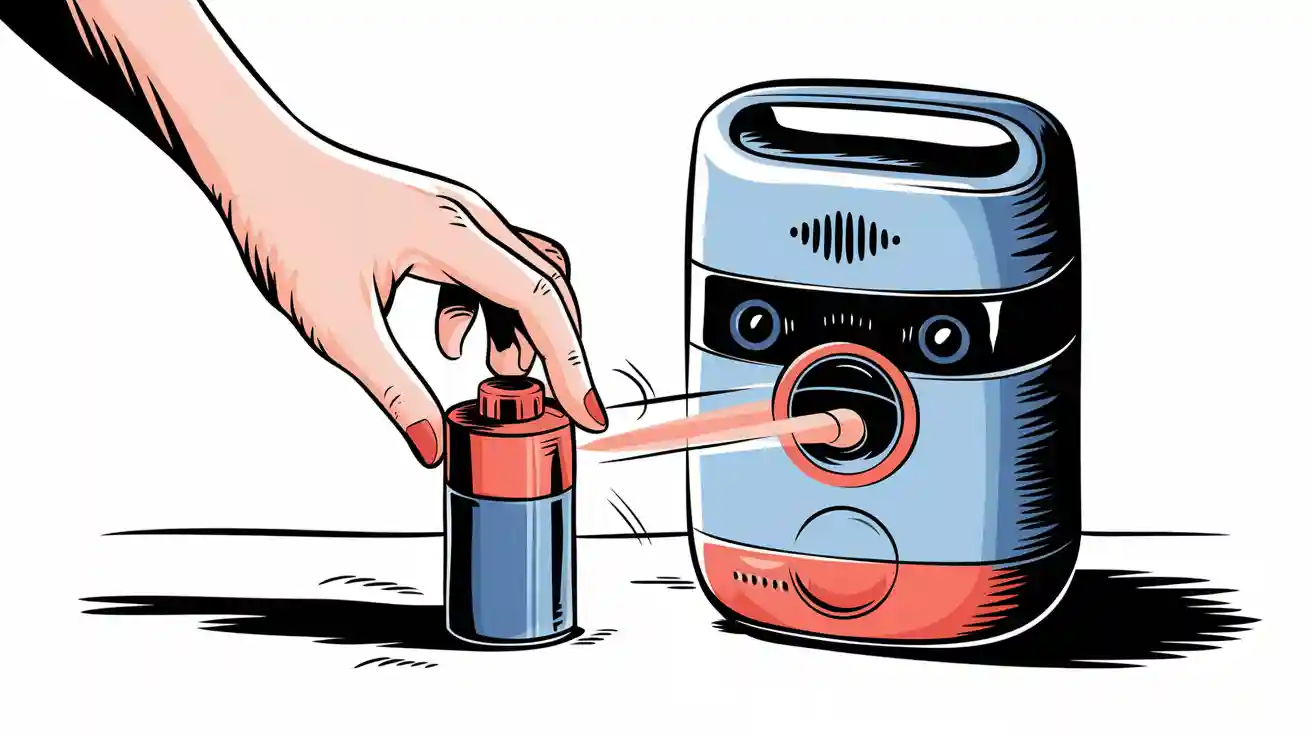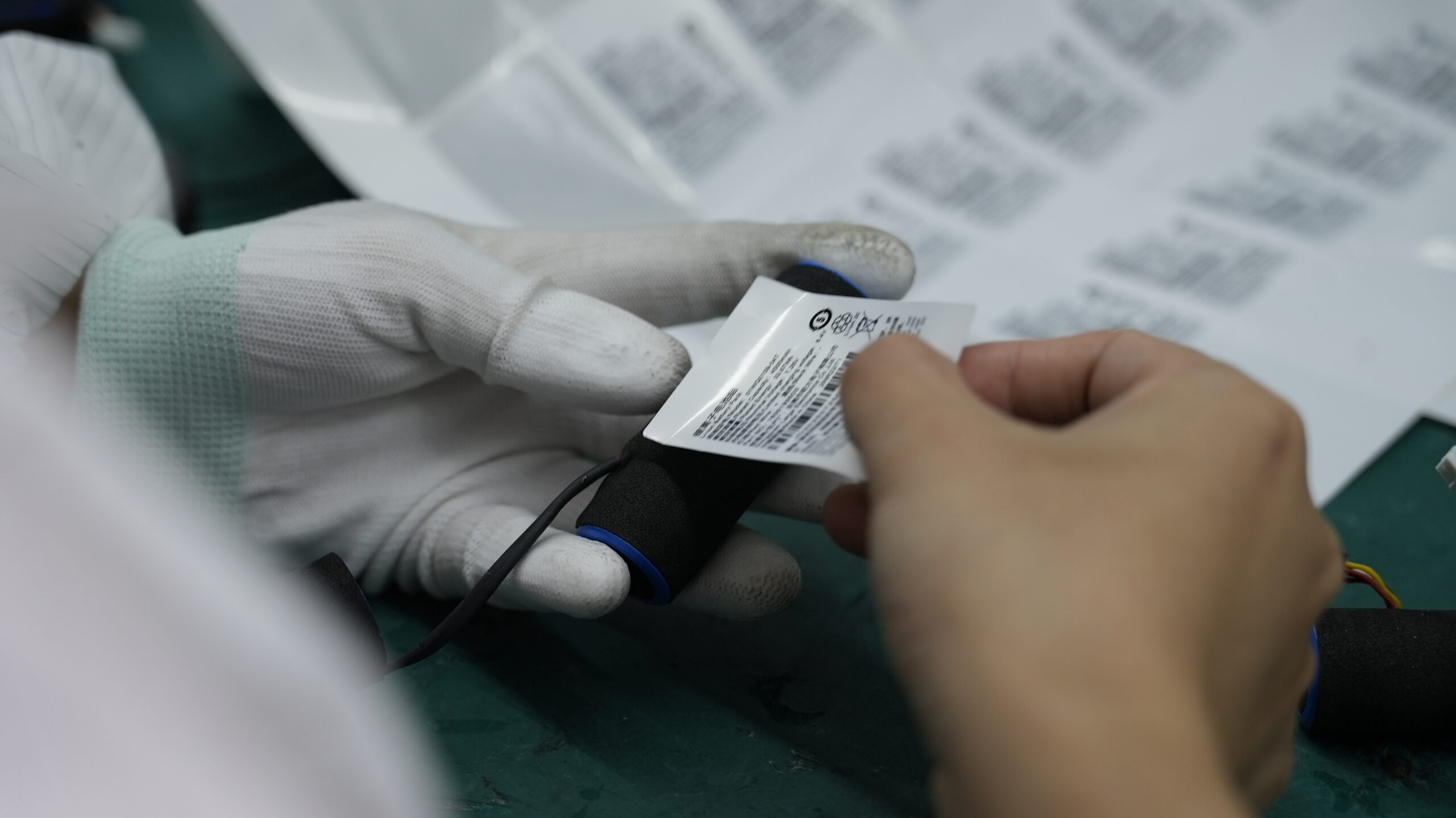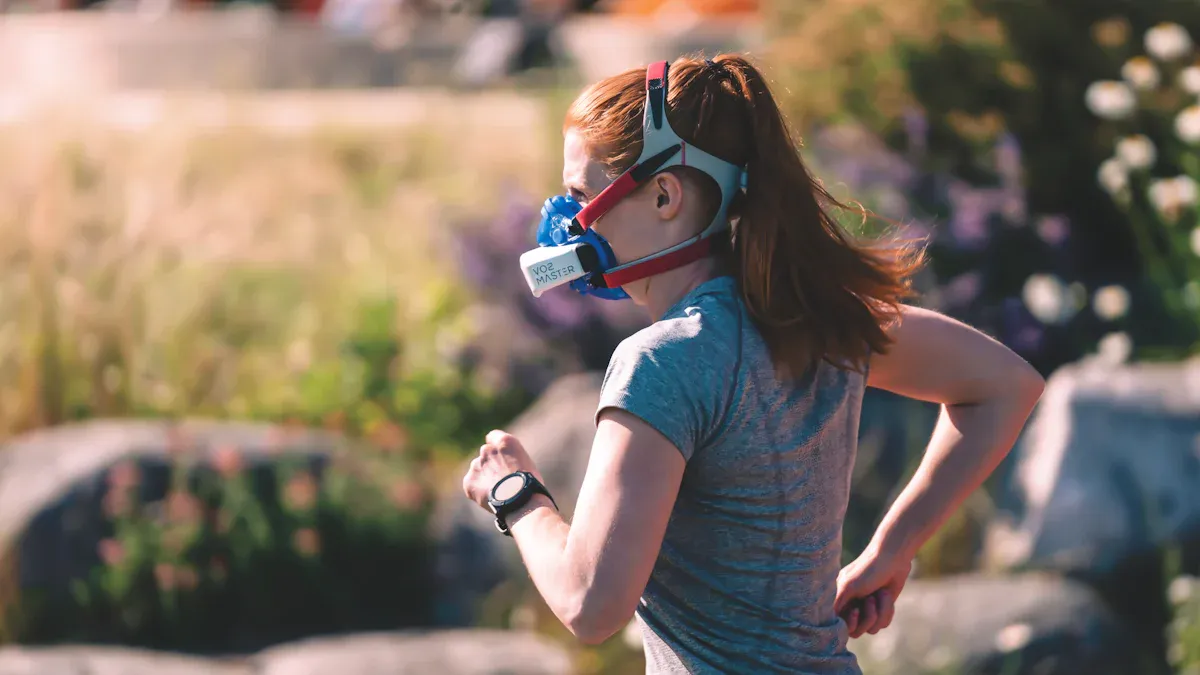
You need lightweight battery packs to make portable oxygen concentrators easy to carry. A small battery helps you feel less tired and lets you move more when you need oxygen. In the last ten years, lithium-ion battery technology has become better, lighter, and lasts longer. This makes portable oxygen delivery more dependable for medical use.
Key Takeaways
Lightweight batteries help people carry portable oxygen concentrators easily. Users can walk around more and feel less tired. Choosing batteries with high energy density, like NMC or LiFePO4, lets people use them longer. This means they do not need to recharge as often. Easy battery replacement and fast charging help users be more independent. It is simple to keep oxygen therapy going while traveling or doing daily things.
Part 1: Battery Features
1.1 Weight and Size
A battery should be light so you can carry your portable oxygen concentrator easily. Some devices, like the Arya Mini and AirSep Focus, use batteries that weigh less than five pounds. Because they are light, you can move around more and feel less tired. You can put these concentrators in a backpack or a shoulder bag. This makes them great for people who need oxygen while out and about.
Light battery packs help patients and healthcare workers move better.
Most portable oxygen concentrators weigh from 3 to 10 pounds, so they are easy to take with you.
Special carrying straps help people with weak muscles stay active.
1.2 Energy Density
Energy density shows how much energy a battery holds for its size. If a battery has high energy density, your portable oxygen concentrator works longer before you need to charge it. This is important for medical use because you need oxygen all the time. Some batteries last up to 8 hours, so you can do your daily tasks or travel without stopping.
Tip: Pick a battery with high energy density so it lasts longer and you do not have to change batteries as often.
Here is a table that compares different lithium battery types used in medical and industrial fields:
Chemistry | Voltage (V) | Energy Density (Wh/kg) | Cycle Life (cycles) |
|---|---|---|---|
LCO | 3.7 | 150-200 | 500-1,000 |
NMC | 3.7 | 150-220 | 1,000-2,000 |
LiFePO4 | 3.2 | 90-160 | 2,000-5,000 |
LMO | 3.7 | 100-150 | 300-700 |
LTO | 2.4 | 70-110 | 5,000-10,000 |
Solid-State | 3.7 | 250-350 | 1,000-10,000 |
Lithium Metal | 3.7 | 300-500 | 500-1,000 |
1.3 Portability in Portable Oxygen Concentrators
It is helpful when batteries are made to be easy to carry. Small batteries let you use your portable oxygen concentrator when you travel, run errands, or during emergencies. Fast charging and easy battery swaps mean you always have oxygen when you need it. These features help patients be more independent and get better care.
Portable batteries are also used in robots, security systems, and factories.
Doctors and nurses use small battery packs to give oxygen in hospitals and at home.
Part 2: Battery Technologies

2.1 Lithium-Ion for Portable Oxygen Concentrator
Most portable oxygen concentrators use lithium-ion batteries. These batteries are light and last a long time. They can be charged and used many times. This helps your device work longer without getting heavy. The table below shows the main good things about them:
Advantage | Description |
|---|---|
Energy Density | Lithium-ion batteries provide high energy density, allowing for longer runtimes in portable devices. |
Long Cycle Life | They have a long cycle life, meaning they can be charged and discharged many times without significant degradation. |
Weight | These batteries are lightweight, making them ideal for portable applications like oxygen concentrators. |
Safety Features | Advanced lithium battery technologies include robust safety features to prevent overheating and other hazards. |
Technological Advancements | Continuous improvements in lithium-ion technology enhance mobility, efficiency, and sustainability. |
You can find NMC, LCO, and LiFePO4 batteries in hospitals and factories. These batteries help you get oxygen when you need it and let you move around more.
2.2 Lithium-Polymer Advances
Lithium-polymer batteries, called LiPo, use new lithium battery technology. They make your portable oxygen concentrator even lighter. You can shape these batteries to fit small places. This helps you build smaller devices for medical and other uses. LiPo batteries weigh less than regular lithium-ion batteries. This is good for portable oxygen concentrators because every ounce counts.
Note: LiPo batteries can be made in special shapes. This makes your device more comfortable and easier to carry.
2.3 Battery Management Systems
A battery management system, or BMS, keeps your lithium battery safe. It checks the battery’s voltage, temperature, and current. BMS stops overcharging, overheating, and short circuits. The table below lists important BMS features:
Feature | Description |
|---|---|
Overcharge protection | Cutoff at 4.25V |
Over-discharge protection | Cutoff at 2.75V |
Temperature monitoring | Operating range from -20°C to 60°C |
Short-circuit protection | Prevents damage from short circuits |
Compliance | Meets UL 2054 safety standard |
Thermal runaway suppression | PTC thermistor helps suppress thermal runaways |
Leak prevention | Aluminum-laminated polymer film prevents leaks and punctures |
BMS helps keep your portable oxygen concentrator safe and working well. Top science journals say that smart battery systems make batteries last longer and safer for medical and factory use.
Part 3: User and Business Benefits
3.1 Mobility and Comfort
When you use lightweight batteries, you can move around easily. Devices under five pounds fit in a bag or backpack. You can walk, shop, or travel without feeling heavy. Modern batteries help your device stay quiet. You can use oxygen in public without people noticing. This comfort helps you do daily things and stay active.
Lightweight batteries help you join social events and move more.
Quiet devices let you use oxygen therapy without others knowing.
3.2 Extended Battery Life
Longer battery life changes how you use your device. You can go out longer without charging. This gives you more freedom to travel or go to events. You do not have to stop your oxygen therapy. This helps your daily routine and makes you feel better.
Tip: Pick batteries with high energy density like NMC or LiFePO4 for longer use and safety.
3.3 Ease of Replacement
It is important to change batteries easily. You can swap batteries fast, so you do not lose oxygen. Most batteries charge with AC or DC cords. Some charge inside the device or with an outside charger. This makes sure your device is always ready to use.
Battery Type | Battery Life | Charging Method |
|---|---|---|
Replacement | 2 to 5 hours | AC, DC, External Charger |
Easy battery swaps help keep you safe and your device working well.
3.4 Travel Convenience
Travel is easier with small and light batteries. FAA-approved models let you fly with your device. Good batteries make sure you have oxygen on long trips. Small designs give you freedom and confidence when you travel.
Long battery life and easy swaps help with trips and daily use.
Small batteries help everyone move safely and easily.
Part 4: Battery Selection and Safety
Picking the right battery for your portable oxygen concentrator is very important. It helps your device work well, stay safe, and last longer. You need to think about if the battery fits, how much power it holds, how you charge it, safety parts, and if it has the right labels. These things help your battery work well and make sure you get oxygen when you need it. This is true for medical, robot, security, building, and factory uses.
4.1 Compatibility with Portable Oxygen Concentrators
You have to pick a battery that fits your concentrator model. Every portable oxygen concentrator needs a battery made for its voltage, size, and plug. If you use the wrong battery, your device may not work right or could break.
Here is a table that shows which batteries fit some popular models:
Inogen Model | Battery Compatibility | Notes |
|---|---|---|
G4 | G4 battery only | Not compatible with G5 |
G5 | G5 battery only | Can use double battery for extended use |
Always read the maker’s rules before you buy a new battery. This helps your concentrator work safely and well.
4.2 Capacity and Runtime
How much power a battery holds and how long it lasts matter a lot. This tells you how long your portable oxygen concentrator can give you oxygen before you need to charge it again. You should check the watt-hour (Wh) number and see if it matches what you need.
Lithium-ion batteries like NMC, LCO, and LiFePO4 hold a lot of energy and last long.
Bigger batteries can store more power, so your concentrator runs longer.
Pulse dose uses less oxygen and makes the battery last longer, but continuous flow uses more power.
Higher liters per minute (LPM) settings use more battery and make it run out faster.
Tip: Pick a battery that can handle your concentrator’s highest oxygen flow when you need it most.
4.3 Charging and Cycle Life
How you charge your battery and how many times you can charge it are important. Only use chargers the maker says are safe, or you might hurt your battery or device.
Most lithium-ion batteries can charge with AC or DC power, so you can use them in many places.
Cycle life means how many times you can charge and use the battery before it gets weak. LiFePO4 batteries can last 2,000 to 5,000 cycles. NMC batteries last 1,000 to 2,000 cycles.
Charging your battery often and storing it right helps it last longer and keeps your oxygen steady.
Note: Always look at your charging cords and plugs for damage. Change them if they are worn out to stop charging problems.
4.4 Safety Features
Safety is very important for batteries in portable oxygen concentrators. If a battery gets too hot, swells, or leaks, it can stop working or be dangerous. You should get batteries with good safety features to keep your device and users safe.
Some important safety features are:
Overcharge and over-discharge protection to stop battery harm.
Temperature checks to keep the battery from getting too hot.
Short-circuit protection to stop electric problems.
Check for swelling, leaks, or heat often.
Only use chargers that are approved and check the battery contacts for damage.
If you see any damage, stop using the battery and throw it away the right way. Doing these things helps your battery work well and keeps you safe in hospitals, robots, and security systems.
4.5 Certifications
Certifications show your battery is safe and made well. Always pick batteries with trusted certifications for portable oxygen concentrators. This makes sure your battery follows the rules in places like the US and EU.
Certification Standard | Description |
|---|---|
IEC 62133 | Safety for portable sealed secondary cells and batteries |
IEC 60086-4 | Tests and requirements for primary lithium batteries |
IEC 61960 | Safety for secondary lithium cells and batteries |
IEC 62281 | Safety during transport of lithium cells and batteries |
ANSI C18.2M, Part 2 | Safety for portable rechargeable cells and batteries |
ANSI C18.3M, Part 2 | Safety for portable lithium primary cells and batteries |
CE Marking | EU product safety compliance |
FDA Compliance | US medical device battery system standards |
For more about safe battery making and the environment, see Our Approach to Sustainability and Conflict Minerals Statement.
You can also check IEC 62133 for more safety rules.
Having certifications and using safe materials helps people trust your batteries. It also makes sure your portable oxygen concentrator batteries are safe and work well.
Part 5: Real-World Impact

5.1 Case Studies
Many industries use advanced lithium battery packs. In medical devices, portable oxygen concentrators like the Inogen Rove6 and Inogen One G5 use NMC and LiFePO4 batteries. These models have long battery life and are light to carry. They give steady oxygen to people who need it. Hospitals and home care say these devices help patients stay active and do things on their own. In robotics and security, small battery packs help robots and cameras work longer. This means less time charging and more time working. Factories and big buildings use these batteries for sensors and backup power. This keeps oxygen and other systems running all the time.
5.2 User and Manufacturer Feedback
Users and makers like some main things about these batteries:
Light and small batteries make travel easier.
Long battery life lets people use oxygen all day.
Quiet devices let people use them in public without noise.
You can change flow settings and get more oxygen if needed.
FAA rules let you fly with these batteries.
Good battery life helps people stay active and free.
You can use your device when you travel or go outside, which is a big plus.
5.3 Common Challenges and Solutions
Picking the best battery for your portable oxygen concentrator can be hard. The table below lists problems and ways to fix them:
Challenge | Solution |
|---|---|
How you move can change what battery you need | Pick batteries with more power for future needs. |
Different users need different power setups | People at home use normal batteries; active people need bigger options. |
Flow delivery changes how long batteries last | Learn about flow types to get the most from your battery. |
Battery setup choices | Look at many setups to find what works best for you. |
How to care for batteries | Take care of your batteries often to keep them safe and working well. |
You can solve these problems by working with experts and following good battery care steps.
Small and light batteries in portable oxygen concentrators help you move around more. They also make the battery last longer, so you can use your device for more time.
You should look for batteries that are easy to carry and can be changed by the user. This helps when you travel or need oxygen without stopping.
Pulse flow oxygen delivery lets you use these devices in many places. You can use them in hospitals, robots, security jobs, and factories.
FAQ
What makes a battery powered oxygen concentrator suitable for uninterrupted oxygen therapy in industrial and medical settings?
You need a battery powered oxygen concentrator with strong energy density and new technology. This helps you get oxygen all the time, even during long work hours or emergencies. It makes sure you always have oxygen when you need it.
How does compact battery technology improve delivery in robotics and security systems?
Compact battery technology lets you use small models in tight spots. It makes sure they work well and always have oxygen.
Why should you choose LiFePO4 or NMC batteries for the best portable oxygen concentrator in infrastructure projects?
LiFePO4 and NMC batteries last a long time and hold lots of energy. They use safe and steady technology. You get steady oxygen and can trust your device in big projects.




